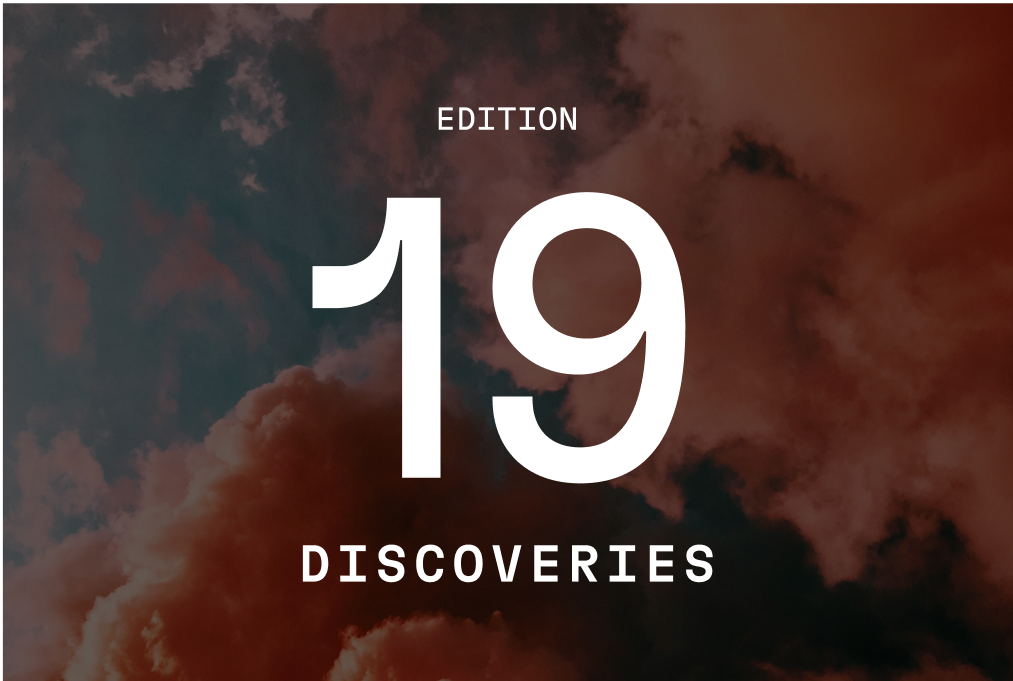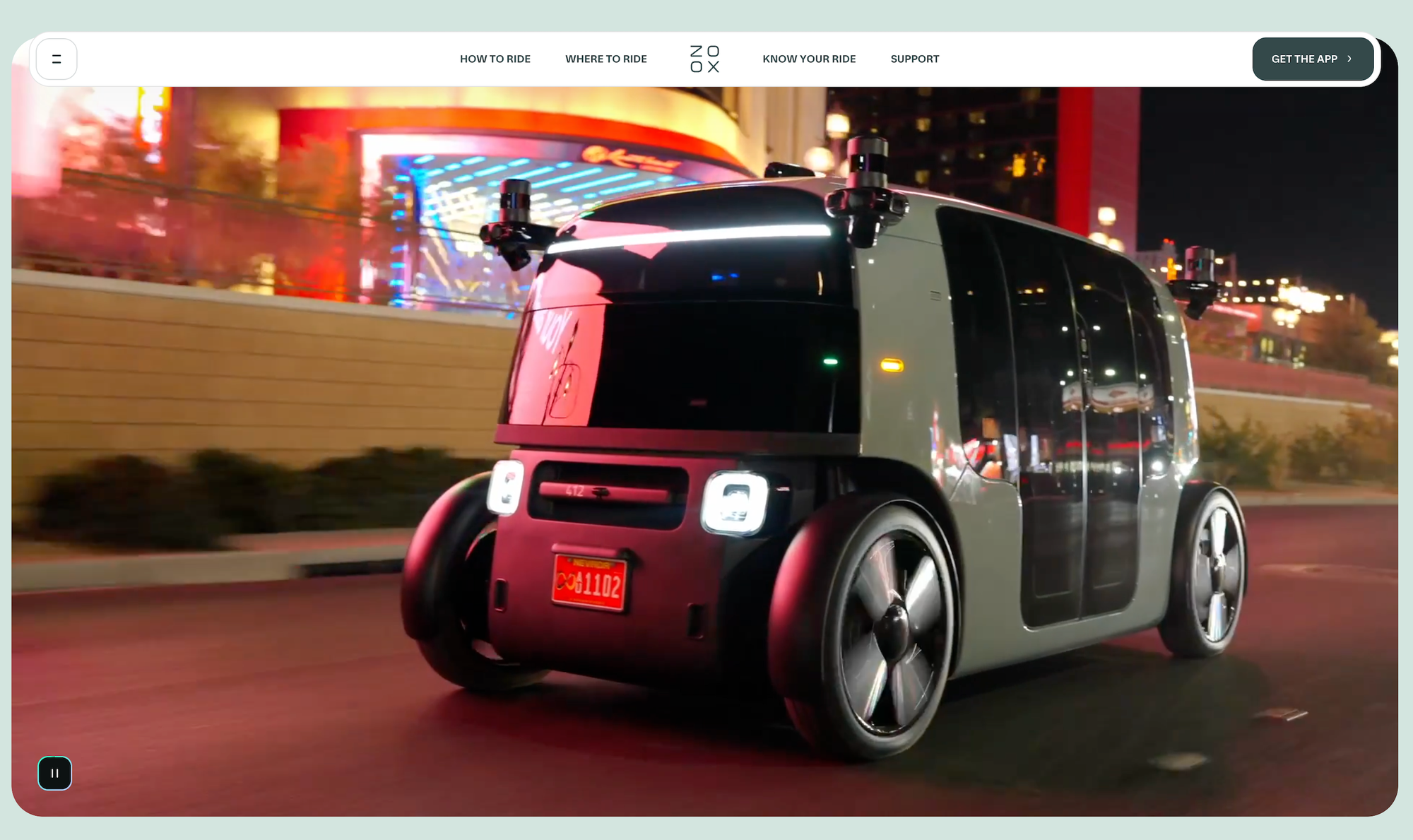Discoveries #19 | Digital Hospitality

Welcome to Edition 19 of Discoveries where I share inspiration on design, product building, and what's next.
Digital Hospitality
Recently I caught up with my buddy Josh Sharkey, who runs a company called Meez.
Josh spent much of his career as a chef in some of the most iconic Michelin-starred restaurants in New York City before deciding to start a tech company to solve the pain points he constantly faced in the kitchen.
I love chatting with Josh because he doesn’t fit the traditional tech founder mold. Our conversations zigzag through hospitality, brand-building, product design, and the latest AI tools he’s experimenting with — and they always leave me thinking differently.
During one of our last chats, he threw out an idea that stuck with me:
“People talk a lot about what makes great hospitality, but what does great digital hospitality look like?”
It’s a great question — because most software in the hospitality space is… well, the opposite of hospitable. Clunky, dated, and about as delightful as calling an airline help desk.
At BoomPop, a lot of how we think about hospitality is influenced by the book Unreasonable Hospitality, which we required our whole team to read last year.
(Side note: if you haven’t read it yet, it’s the one book I recommend to literally everyone. Doesn’t matter your industry or role — it’s that good.)
We’ve pulled four key principles from that book and used them as the foundation for how we design “digital hospitality” into our platform. These apply to anyone building software who wants to make their product feel more alive, human, and—dare I say—fun.
1. Never make customers start from scratch.
The best products give you a head start.
Figma has thousands of community templates. Notion’s template marketplace can jumpstart your second brain. Spotify greets you with playlists before you even know what mood you’re in.
Starting from zero feels like work. Starting from something feels like inspiration.
2. Customers should always know what’s next.
In the events world, this is rule number one: no one likes wondering where to go next. The same applies to digital experiences.
If you want your product to be exceptional, make sure your users always know where they came from, what to do right now, and what happens next.
Most products fumble this. The best products obsess over it.
3. People can feel perfection.
Think about the products you use daily, like ChatGPT, Google Maps, or Instagram. They’re fast, fluid, and feel effortless because hundreds of designers and engineers have refined every micro-interaction and edge case.
You can feel the care baked into them. They don’t just work — they anticipate.
That’s the difference between software that functions and software that feels alive.
4. “It might not work” is a terrible reason not to try.
Every big breakthrough starts in the land of uncertainty. The best teams I’ve worked with — designers, PMs, engineers — are the ones constantly experimenting.
Trying, failing, adjusting, repeating. That’s the cycle that leads to magic.
Plenty of world-changing discoveries started as “probably won’t work” moments. Innovation doesn’t come from coloring inside the lines. It comes from scribbling in the margins.
--
If you’re interested in listening to my whole conversation with Josh, you can check it out here.
Product Inspiration
These little pods are popping up all over SF and somehow make Waymo look like yesterday’s news.
Zoox is fascinating because it's the first company to design a fully custom vehicle from scratch for autonomous ride-sharing. Everyone else just hacked self-driving tech onto regular cars.
When you remove the steering wheel, rearview mirrors, and pedals, you can rethink the entire form factor — which is why Zoox looks more like a futuristic lounge than a car.
I actually wrote about this idea back in 2017, and now it’s finally rolling down the streets. Wild.

What I'm Reading
Steve Jobs on How to Design Insanely Great Products
Simplicity is the ultimate sophistication.
- If users need a manual, the design has failed
- Eliminate unnecessary buttons, features, and complexity
- Focus on making the product intuitive and obvious to use
Question everything about the current design.
- Challenge every assumption about how things “should” be
- Think different — break from conventional wisdom when necessary
Start with the user experience, then work backwards to the technology.
- Design is not just how it looks, but how it works
- Every interaction should feel magical and delightful
- The best interface is no interface — make technology invisible
Perfection in details matters.
- Obsess over every pixel, every corner, every transition
- The parts you can’t see should be as beautiful as the parts you can
- Quality must go all the way through
Create products people don’t know they need yet.
- Don’t rely on market research — show people the future
- If you ask customers what they want, they’ll say “better horses”
- True innovation means seeing what others can’t see
Integration of hardware and software.
- Great experiences come from controlling the entire stack
- Everything must work together seamlessly
- Don’t compromise the vision by relying on others’ components
Say no to 1,000 things.
- Focus is about saying no to good ideas
- Do a few things exceptionally well rather than many things adequately
- Kill projects that don’t meet the highest standards
Prototype and iterate.
- Make real working models, not just drawings
- Keep refining until it feels absolutely right
- Don’t be afraid to restart if it’s not perfect
Other Finds

Have a great week,
Blake
P.S. I'm always looking for feedback. Reply and let me know what you think! (I reply to every email)
Forwarded this email? Sign up here
Let's connect on LinkedIn